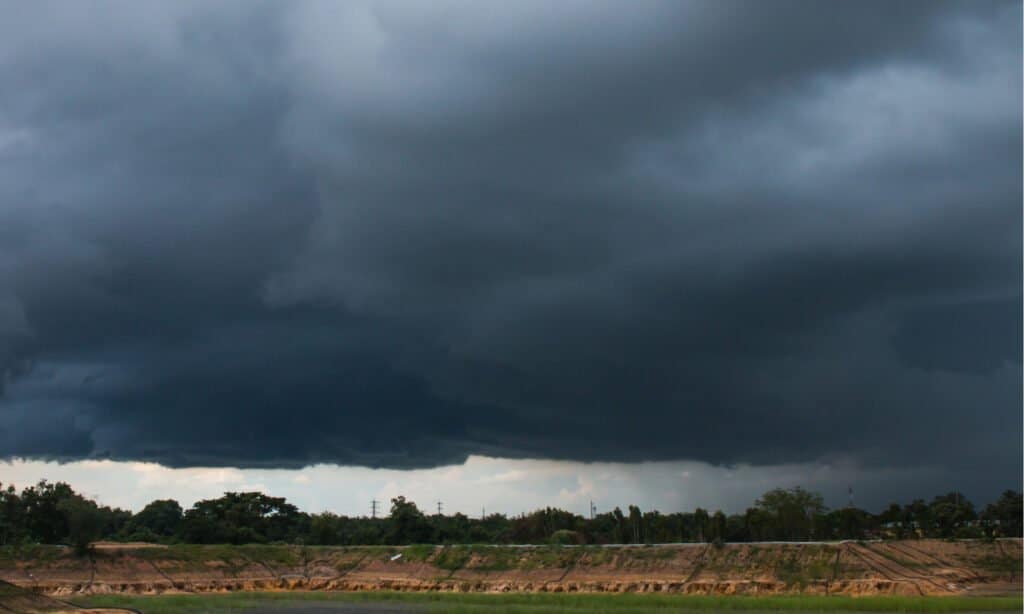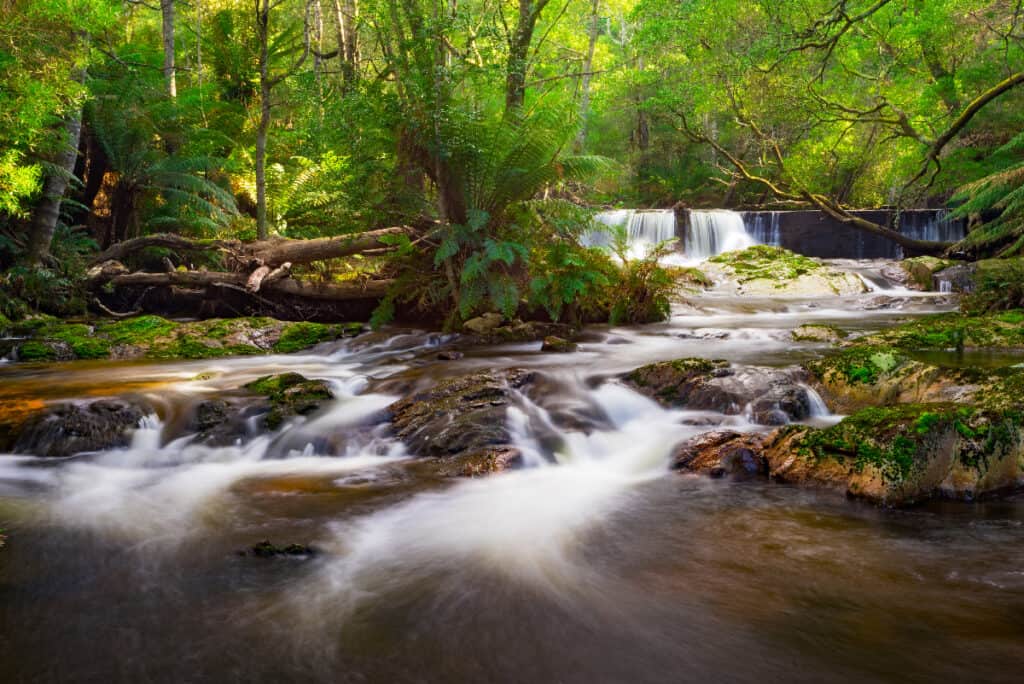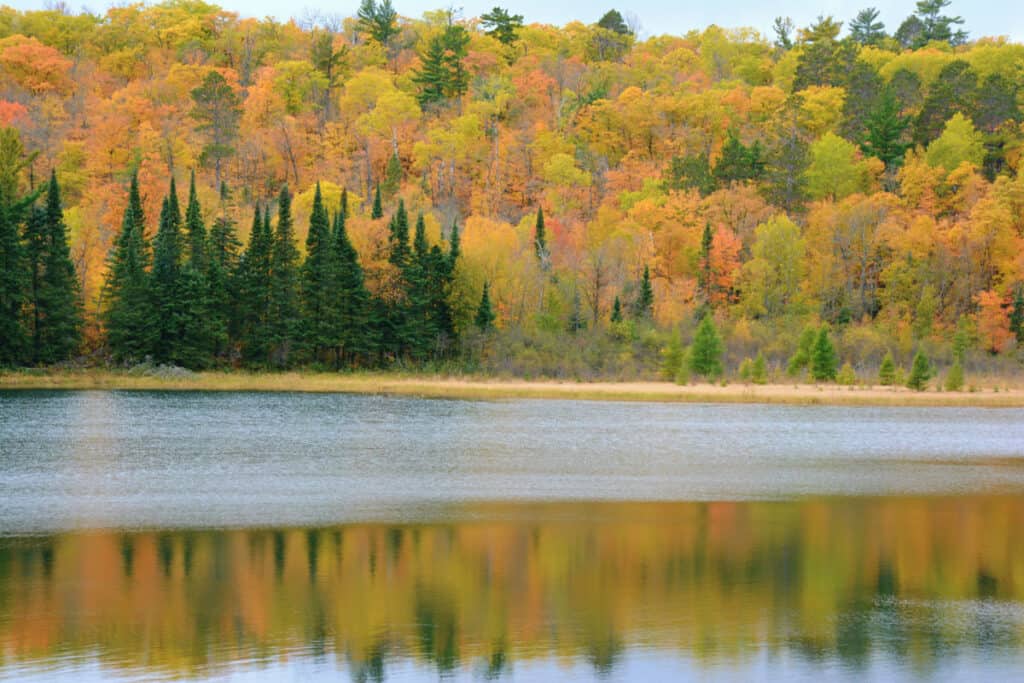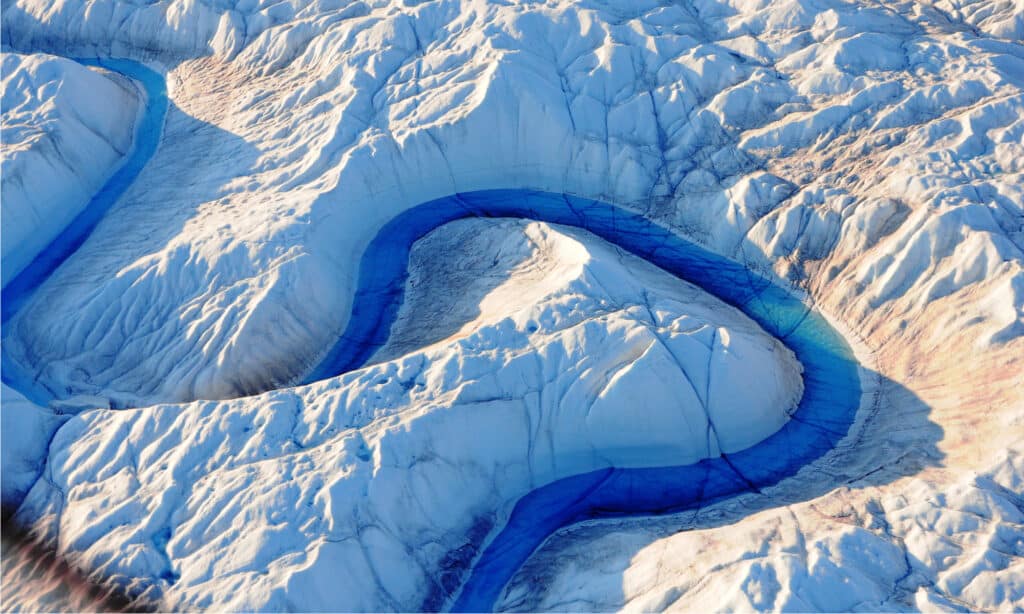Rivers are remarkable flowing bodies of water that move downhill from their point of origin. Some rivers flow for thousands of miles, providing water and economic benefits for those that live alongside them. It’s easy to look at massive rivers and forget that they are millions of years in the making in some cases, frequently diverting from their original course. So, the answer to “how are rivers formed?” can be quite long.
Moreover, some rivers are outliers and have unique circumstances surrounding their development. We will provide a general overview of the river formation process and show you several important steps.
The Water Cycle: The Makings of a River

Rivers begin with rainfall as part of the water cycle.
©Somyot Mali-ngam/Shutterstock.com
Rivers need to have a flow, the water that makes up the river. If you trace the origin of river water back far enough, you’ll find headwaters. Before that, though, you’ll find rain.
The water cycle is responsible for rain. In many cases, water evaporates in low-lying areas, condenses into clouds, and rains down again in higher areas around the world. Once the water rains down, it will either seep into the ground (typically if the land is very flat) or turn into a runoff, water that flows from higher areas into lower areas due to gravity.
Water Flows and Gathers into Increasing Larger Streams

Rainfall turns into runoff that gathers into streams.
©bmphotographer/Shutterstock.com
The runoff that flows from rainfall will gather into streams and continue to flow towards the lowest point. These streams will combine into larger and larger bodies of water, eventually feeding into a lake or directly forming a river.
The course of these streams can be many miles. Finding their origins is nearly impossible, and such a pursuit is usually only taken up in the case of especially large rivers, like the Amazon River. Instead, the origin of a river is usually formed by the scientists’ consensus and may not be the farthest point away from the source.
Headwaters Develop

Lake Itasca contains the headwaters of the Mississippi River.
©iStock.com/Jeff439
The term headwater refers to the point of origin of a river that is farthest from the river’s mouth, also known as the end of the river. A river’s headwaters can be a lake, as is the case with the Mississippi River. This body of water starts in Lake Itasca, Minnesota. Headwaters can also be well-defined streams. Also, a river’s source is not always the place from which it gains the most water.
Rivers continue to collect water flows from other streams and rivers as they flow. When one body of water flows into a river, it’s called a tributary. For example, the Blue Nile and White Nile are tributaries of the main Nile River, the main flow that eventually reaches the Mediterranean Sea.
The place where one river flows into another is known as a confluence. Going back to our previous example, the Blue Nile and the White Nile reach a confluence at Khartoum, the capital of Sudan. From there, the rivers form the main Nile River.
Another interesting example is the Mississippi River, which has a few confluences. Most notably, it has a confluence with the Missouri River and another with the Ohio River, from which it gains a significant portion of its outflow.
A river can have many tributaries and confluences. Naming these rivers after their confluences can be confusing, but it often defers tradition.
The Riverbed and Watercourse

River courses can wind and change over time.
©Daphne Nilsson/Shutterstock.com
Why do rivers flow where they do? Well, as the water flows in a stream, it erodes the soil, developing a watercourse. The movement of the water through the river will cut deeper and deeper over time, solidifying the flow of the river. However, alterations in the landscape, water flow, geological activity, and human efforts can cause the river to change direction over time.
For example, the Mississippi River is only keeping to its present course in its lower channel due to the U.S. Army Corps of Engineers. Their development on the Old River Control Structure has prevented the river from shifting course to the west, entirely bypassing its outlet by New Orleans.
The watercourse of a river is rarely fixed. Flowing water is a powerful force that can alter landscapes given enough time.
Rivers may greatly change over time. Nevertheless, scientists can often tell a river’s age and speed by elements of the watercourse. The depth of the riverbed, the age of the surrounding valley, and the age of the sediments are all useful elements in determining a river’s age.
Where Do Rivers End?

River deltas may be massive, and they alter the trajectory of the water.
©Jeffrey T. Kreulen/Shutterstock.com
Now that we know how rivers are formed, we can talk about how they end. In fact, some rivers end at a confluence with other bodies of water. For example, the Ohio River technically ends when it joins the Mississippi River after flowing for nearly 1,000 miles.
The mouth of a river is the place where it flows into a larger body of water. This can occur when two rivers flow together or when the river reaches the sea or ocean. As rivers approach the ocean, they form a delta. In this case, the deposit of sediments carried by the river creates several landforms that divide the river’s flow into several branching portions.
The Nile River delta is a good example of this landform. The delta increases the “footprint” of the river as it approaches the Mediterranean Sea. Other rivers, like the Amazon River, have such a powerful outflow that they do not form a typical delta.
How Are Rivers Formed? The Short Version

The development of rivers is simultaneously complex and simple.
©Jayce Wyatt Photography/Shutterstock.com
So, how are rivers formed? Here’s the quick version:
- The water cycle causes rain in areas with high altitude
- The water flow collects in streams as it accelerates downhill
- The streams collect into lakes, creeks, and small rivers
- A river begins at a headwater and flows toward another, larger body of water
- The river receives tributary waters at confluences and continues to carve a path through the land
- Eventually, the river reaches a mouth, sometimes forming a delta at the ocean or merely flowing into another body of water.
That’s how rivers are formed and how they flow from start to finish. This is a fundamental overview that does not capture the complete picture. Rivers are very complex bodies of water that require far more information to understand truly.
The photo featured at the top of this post is © Harald L. Vaagan/Shutterstock.com
FAQs (Frequently Asked Questions)
How are river deltas formed?
River deltas are formed with the gradual deposition of sediments as rivers slow where they meet larger bodies of water.
Thank you for reading! Have some feedback for us? Contact the AZ Animals editorial team.







